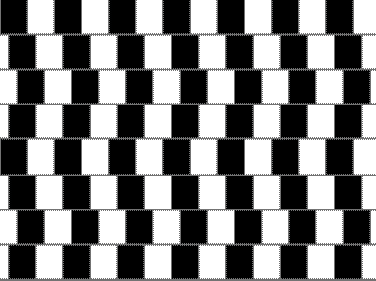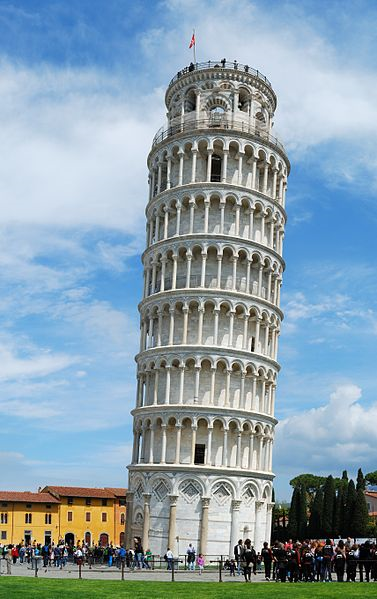Geometry is the study of shapes, and is one of the oldest areas of mathematical interest. Geometrical diagrams have many important features, and the terminology used in the subject is important to ensure concise mathematical communication.
Points, segments, rays, lines
A point is a single location, with no height or width. We use capital letters to distinguish two different points. This diagram shows three different points labelled $A$A, $B$B, and $C$C:
If we connect all of the points from one point to another, we make a segment. This is the segment between the points $A$A and $B$B:
A segment always contains its endpoints. We will sometimes say it is the segment from $A$A to $B$B, which is the same as the segment from $B$B to $A$A. We will often use the abbreviation $AB$AB to mean this segment.
If we start at one point and keep going, we make a ray. This is the ray from $A$A through $B$B:
And this is the ray from $B$B through $A$A:
Direction is important for rays - these two objects are not the same!
If we keep going in both directions, we make the line through $A$A and $B$B:
To summarise, segments and lines stay the same if we reverse the order of the points, but this is not true for rays:
Explore these applets to investigate these objects further. Make a selection and drag the coloured point to highlight all the points that lie on that object:
| Segments | Lines |
| Rays | |
We place small markings on segments when we want to show that they are equal in length. In this diagram, the segment $AB$AB has the same length as the segment $AC$AC:
This does not mean that the two segments are made up of the same points - only that they have the same length. Sometimes we will use more than one kind of marking to show that some segments are equal to others. In this diagram we use both one-stroke markings and two-stroke markings:
Move the points around in this applet to see how the segments stay the same length:
A line between two points contains every point between the points and all the points beyond on either side. A ray starts at one point and continues through another and beyond. A segment starts at one point and stops at the other.
Angles
Whenever two lines, rays, or segments pass through the same point, we can describe the relative orientation of one to the other using an angle. Here are two rays drawn from the same point through two other points:
There are two ways to turn from one to the other. The shorter turn is simply called the angle between the objects, and the larger turn is called the reflex angle. We draw a circular arc from one object to the other to denote the angle (or reflex angle):
We can use three points to refer to an angle by using the symbol "$\angle$∠" followed by three letters, one for each point. The first letter will be on one of the rays, lines, or segments, the second point will be their intersection, and the third will be a point on the other ray, line, or segment. This means there are two equally valid ways to refer to an angle, although there are conventions such as alphabetical order or topmost point first. We can see both ways illustrated in this diagram:
Just like with segments, we can use additional markings to show that two angles are equal. We draw multiple arcs to show that different angles are equal to each other. In this diagram the two angles drawn with double arcs are equal:
The angle between two intersecting segments, lines, or rays represents their relative orientation to each other. We write the angle symbol "$\angle$∠" followed by three letters. The second letter is always the intersection point, and the first and third letters lie on the objects forming the angle, one on each.
Swapping the first and third letters does not change the angle.
Practice questions
Question 1
Select the diagram that shows the line through $E$E and $F$F:
- ABCDEF
Question 2
This diagram has the angle $\angle ABC$∠ABC marked. What is another way of referring to the same angle?
$\angle BAC$∠BAC
A$\angle ACB$∠ACB
B$\angle CBA$∠CBA
C
Question 3
This diagram has two equal segments marked:
What segment is equal in length to $ZY$ZY?
Parallel lines
These occur when we have $2$2 lines that never cross each other. For this to happen the two lines need to have exactly same slope. If they have different slopes they will cross.
Parallel lines occur often in the real world.

Have a look at this wacky picture! Are the horizontal lines parallel?

In fact they are, this is a visual illusion. The spacing of the black rectangles makes our eyes think otherwise.
Parallel lines are marked with chevrons like this: $>$>, and if the number of chevrons on two lines match, they are parallel.

Two pairs of parallel lines.
Perpendicular lines

The Leaning Tower of Pisa
Perpendicular is the word used to describe when one object meets another at exactly $90^\circ$90°. So perpendicular lines are simply lines that cross each other at exactly $90^\circ$90°.
To see how important the idea of perpendicular really is just think about the floor, walls and roof that surround us. If a builder does not take care to make the walls perpendicular to the floor and ceiling we'll end up with an unstable house.
The leaning tower of Pisa is a famous example of perpendicular angles gone wrong! Prior to restoration work performed between 1990 and 2001, the tower leaned at an angle of $5.5^\circ$5.5°, but the tower now leans at about $3.99^\circ$3.99°. That means the acute angle made by the tower and the ground is $86.01^\circ$86.01°.
Use the following applet to see parallel and perpendicular lines in action. Watch this video to see this interactive in action first then have a go yourself.
|
|
Intersections and concurrent lines
Because lines extend forever in both directions, unless they are parallel they will intersect somewhere. On the other hand rays and segments might not intersect even when they are not parallel. This is because rays and segments have end points.
Now when $3$3 or more lines all pass through the same point we give those lines a special name- they are called concurrent lines.
The point of intersection is called the point of concurrency, labelled point $P$P below.

Perpendicular: two lines, segments or rays are perpendicular if they cross or meet at right angles, notated $AB\perp CD$AB⊥CD
Parallel: two lines, segments or rays are parallel if they are the same distance apart. In the case of lines this means that they never cross and is notated $AB\parallel CD$AB∥CD
Concurrent: if three or more lines, rays or segments intersect at a single point they are called concurrent.
Practice questions
Question 4
Which of these lines are not parallel?
 A
A B
B C
C D
D E
E
Question 5
Select the diagram showing a pair of parallel segments:
- ABCD

























